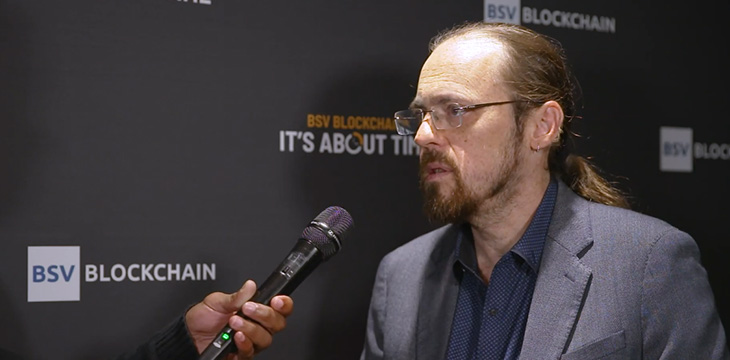|
Getting your Trinity Audio player ready...
|
Bitcoin SV Node Infrastructure Team Technical Director Steve Shadders stopped by CoinGeek Backstage on the sidelines of the CoinGeek Conference in New York, where he shared what is the most important thing for him right now—getting Teranode out onto the public network.
“Because the explosion we are recently seeing in the BSV network is that we are going to start pushing the limits of what the old legacy software can deal with. Teranode blows away all the limits that Bitcoin would ever have,” Shadders told CoinGeek’s Patrick Thompson.
What is Teranode? Shadders said the easiest way to describe it is the horizontal scaling aspect of the Bitcoin node. He explained that Teranode enables sharing the work of a Bitcoin node across multiple machines in a cluster. Put four, eight, or 100 servers together, and they all work together to perform the work of a Bitcoin node, i.e., collecting transactions off the network, validating, and putting them into blocks.
He said the Bitcoin network then becomes a function of investment—based on how much one is willing to invest in hardware to run your node on its same software that runs on all different cluster nodes and lets them talk to each other. “But one can expand its capacity in that way. And Bitcoin is built in a way that’s complementary to that because if one needs to expand the capacity, it means a lot more transactions are coming in that means a lot more revenue coming in, so Bitcoin pays for itself that way,” Shadders said.
When asked what Teranode means for developers and end-users? Shadders noted that Bitcoin users aren’t using Teranode because it will be expensive to run. Since the transaction fee will fund it, it will only make sense for miners to operate the Teranode. Referring to the Bitcoin is a client-server type model like most IT-service models, but its magic is that it is an economic model, Shadders said.
Shadders revealed that the Teranode will run on the main net in the first half of 2022. It might launch under a “slightly” restrictive license for safety and compatibility reasons; however, the complete transition would happen by the end of next year.
According to Shadders, the key takeaway from his presentation about Teranode is that application developers need to start thinking about Bitcoin as users rather than node operators.
“Satoshi provided a way for us to interact with the Bitcoin network that doesn’t require operation of a full node; therefore, the key takeaway is to read Section 8 of the Bitcoin white paper. It’s the most important part of the paper for everyone who uses the Bitcoin network, but isn’t directly involved in mining,” Shadders concluded.
Watch: Steve Shadders shares BSV Technical Updates at CoinGeek New York

 12-22-2025
12-22-2025 




